What is Aeration?
Aeration is the process of poking holes in or removing plugs from your soil. The most effective form of aeration is core aeration. This involves the process of removing plugs from your soil with a machine known as a core aerator. These plugs can then be left on top of the soil where they will break down over time or you can remove them using a rake, blower, or other piece of equipment. Most sources will say that it is most beneficial to leave the plugs, but it really comes down to preference. Leaving the plugs atop the soil to decompose will introduce thatch-decomposing microorganisms from the soil to the top of your thatch. (Thatch is the layer of dead grass and other lawn debris that accumulates between your living grass and soil.)
Benefits of Aeration

Aerating allows for the decompression of your soil. Your soil becomes compressed over the course of a year from use. Things such as water, snow, lawnmowers and foot traffic compress the soil which make it difficult for nutrients and water to get to the roots of your grass. In addition, the roots of your grass become suffocated and can become shallow and weak. Aeration will help to open up the soil, allowing for water and nutrients to reach the roots. Furthermore, the roots will be able to spread and grow more easily as the soil becomes loosened.
Aside from decompression, aeration has many benefits. As mentioned previously, it aids in thatch management while increasing avail be nutrients. Opening up pathways and reliving pressure from the soil allows air, water and nutrients to better penetrate the soil. If you have pH issues with your soil, aerating promotes pH changes deeper in the soil. Spread lime or sulphur after core aeration to allow for changes to take place below the surface. Finally, it prepares your lawn to go into dormancy; building a thicker, healthier lawn.
Types of Aeration and Aerators
There are three general types of aerators:
- Spike Aerators: Poke holes in the soil using a solid tine. This is the least recommended type of aeration because it can increase compaction around the holes.
- Slicing Aerators: Rotating blades cut or slice through the soil. Slicing aerators still leave the soil in the ground, but they better open up pathways for water and nutrients without further compacting the soil. These are usually cheaper than core aerators but are not generally recommended by lawn care professionals.
- Core (Plug) Aerators: Rows of hollow tines remove plugs from the soil and deposit them on top of the lawn. Core aerators are the choice among lawncare professionals and enthusiasts. They are the most effective at alleviating compression and promoting lawn health. In addition, they can often be rented from power equipment stores.
We are going to focus on the different types of core aerators since they are the best machines to use. The two basic types of core aerators are drum and reciprocating.
Drum Aerators
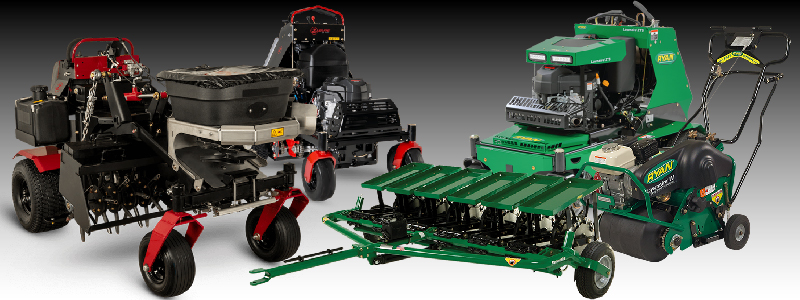
Drum-style core aerators are the most common type of core aerators and come in multiple different styles. Some drum aerators are a literal drum that gets filled up with water or sand for weight and get towed behind a tractor. Others have what are known as tine stars that tines get screwed onto and the weight of the machine (or pressure by the hydraulic system) forces the tines into the ground. In either case, the tines rotate around a central axis to create plugs in the soil.
Drum aerators come as walk-behind/push, tow-behind, and stand-on models. Aeration patterns are predefined meaning the speed at which the machine moves has no effect on the hole density. Additionally, most drum aerators require the tines to be lifted when making sharp turns or backing up. To have a higher hole density, multiple passes have to be made in varying directions.
Drum aerators are the best for large areas such as sports fields, cemeteries and parks. They are easier to scale in size and come in multiple styles. Additionally, they are generally cheaper than reciprocating aerators (given their size).
Reciprocating Aerators
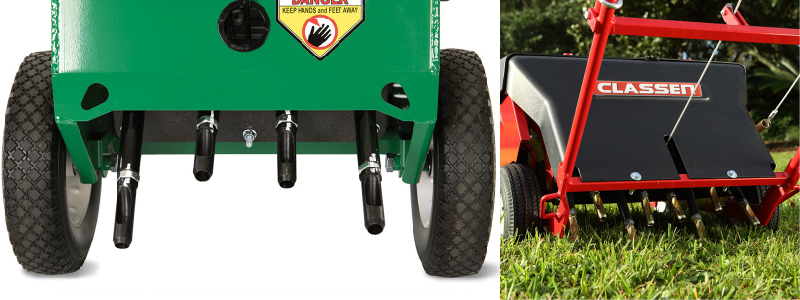
Reciprocating aerators use fewer tines than a drum aerator. The tines move up and down to punch plugs into the soil, so aeration is not dependent on the weight of the machine. Also, hole density can be adjusted by simply moving faster or slower since the tines move independently of the machine. Additionally, the tines do not need to be lifted out of the ground when making turns.
Currently, reciprocating models are limited to walk-behind aerators making them most useful for smaller areas. Reciprocating aerators come with a larger price tag than drum aerators, but are easier to maintain and generally much more compact.
When & How to Aerate
When
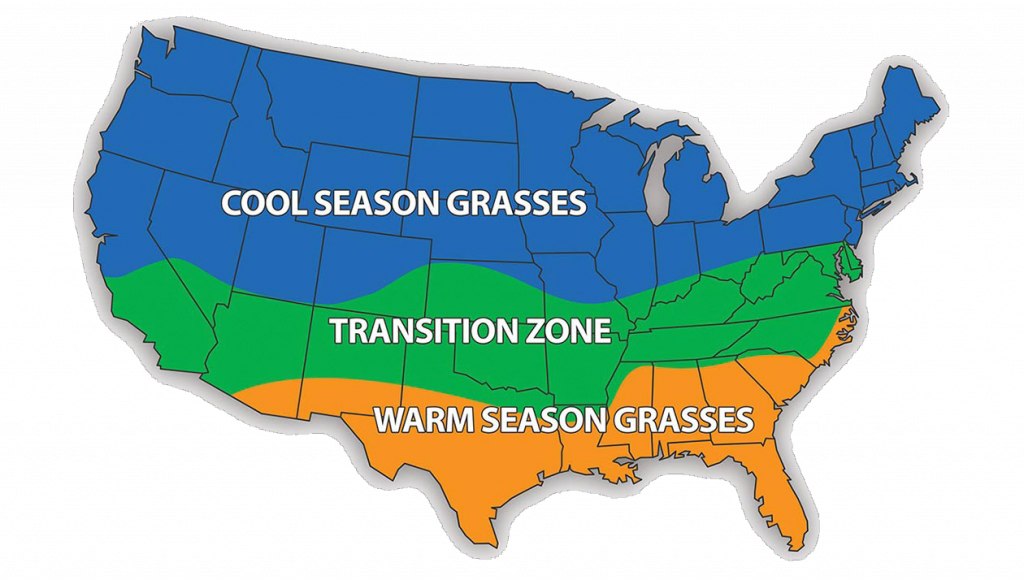
Cool season grass (and most transition zones) have their main growing seasons in the fall and early spring while warm season grass has its main growing season in late spring through summer. You should always do major lawn work during the main growing season of your grass so that it can quickly recover from any changes. Plus, fertilizers will be more effective and grass seed will be able to take root quickly. For cool season grass, aeration is best done in early fall. For warm season grass, late spring is the best time. In general, you should aerate once a year, but every other can be sufficient for lawns with low usage.
In addition to aerating during the correct season, there are a few general guidelines to set your lawn up for success. Make sure your lawn is damp before aerating. To achieve this, aerate the day after a rain shower or water your lawn the day before. This will allow the tines to pull out plugs more efficiently and keep your from damaging the soil. For cool season grass, wait until the temperature breaks and remains cool before aerating. If you aerate too early in the fall season, you will throw off the rest of your fall schedule. Mow your lawn shorter before aerating. If you grow your grass longer in the summer, lower your deck (generally to about 2.5-3 inches). Shortening the grass will allow for easier aeration and better successive steps.
How
Before you begin aerating, be sure to make any shallow pipes, sprinkler heads, and/or invisible fences. Aerating over any of these can cause damage to both the item and your aerator. If you rent your aerator, the shop usually gives you general guidelines and instructions for use. Always follow instructions given for your specific machine. Below are some general guidelines to follow while aerating.
- Aerate in straight parallel lines. In order to ensure an even hole density, aerate as straight as possible.
- Make a second pass perpendicular to the first in dying or bare areas. This will allow for more seed and fertilizer to enter the areas.
- DO NOT turn with the tines engaged. In general, you have to lift the tines prior to making turns so that you do not tear up the ground or damage your aerator.
Aftercare
After aeration, your yard is ready for seeding and fertilizing. Also, be sure to limit traffic on your lawn while keeping your lawn sufficiently watered. Read our Fall Lawn Care article for more on next steps.
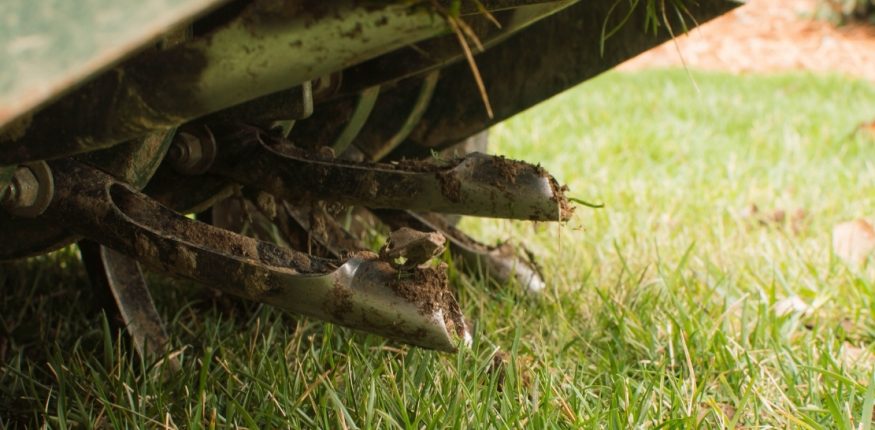
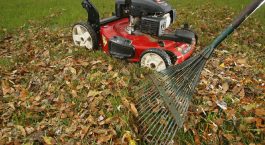
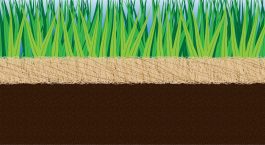
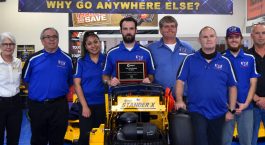
Recent Comments